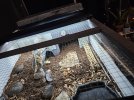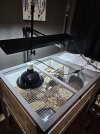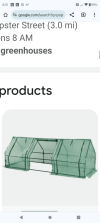katie_lang88
New Member
Can the UVB be too close to the tortoise shell? I got a new light, T5 reptisun, and I'm figuring out where to put it? He's got a hide he goes on top of most of the day so I'd like it to be over that but that's only like about 4 inches from his shell with the wire mesh in between. My heat bulbs in a dome light so it's easy to hang.


